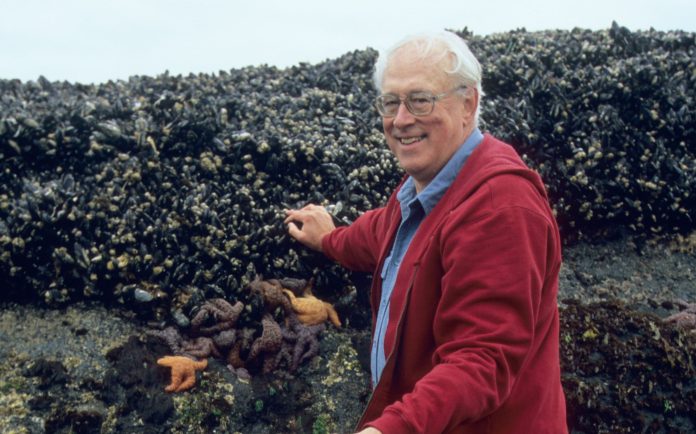Bob Paine, who has died aged 83, was a marine ecologist who coined the time period “keystone species” to explain animals and crops whose loss can wreak havoc on an ecosystem, a lot because the elimination of a keystone will trigger an arch to break down.
The keystone idea took the sector by storm within the late Nineteen Sixties, when Paine described eradicating dozens of Pisaster ochraceus starfish from the rocky intertidal zone of Makah Bay in Washington state. The starfish was the primary predator of the mussel Mystilus californianus, which took benefit of its absence to invade, occupy and dominate, ensuing within the whole variety of species residing on the rocks dropping by half.
Paine described this “trophic cascade” in a 1966 paper in American Naturalist entitled “Meals Net Complexity and Species Range”. In 1969 he outlined a keystone species as one which determines “the integrity of the group and its unaltered persistence by way of time”.
Scientists quickly described different keystone species, similar to the ocean otter. Within the early Seventies it was discovered that after Aleut islanders hunted the otters or drove them away from sure Aleutian islands off the coast of Alaska, sea urchins – a favorite otter meals – started to proliferate, destroying swathes of Pacific large kelp forests and the fish residing in them, leading to fish-free “urchin deserts”.
The foremost thrust of the keystone idea was to establish how the presence of sure predators determines the steadiness of competing organisms in an ecosystem. The concept continues to have huge foreign money amongst ecologists. It additionally performs an necessary position in environmental administration strategies.
Lately, nonetheless, a rising physique of labor means that ecological processes are extra advanced than the top-down mannequin suggests. Non-predators and enormous populations can play simply as necessary roles as “keystones” in sustaining ecosystems, and there’s growing proof {that a} creature’s ecological significance just isn’t fastened.
The Pisaster ochraceus, for instance, just isn’t a keystone in areas the place sand routinely washes over the rocky shoreline, burying mussels and conserving their inhabitants in test.
Whereas the keystone idea stays elementary in ecology textbooks, it’s now being given a broader interpretation, throughout the context of the processes that keep an ecosystem, as describing any species which has a disproportionate affect on its atmosphere.
Robert Deal with Paine was born April 13 1933 in Cambridge, Massachusetts, and was fascinated by nature from a younger age. After taking a level at Harvard, he moved to the College of Michigan to do graduate analysis on fossils, however switched to finding out residing animals after attending a lecture on freshwater invertebrates. He obtained a grasp’s diploma in 1959 and a PhD in zoology in 1961.
He moved to the West Coast within the Nineteen Sixties as an assistant zoology professor on the College of Washington.
From 1970, a lot of his analysis was carried out on Tatoosh Island, an uninhabited rocky island off the Washington coast. There he repeated his starfish-removal experiment on an even bigger scale and undertook related work in a zone dominated by brown algae, the place he systematically added or excluded seven grazing species of shellfish.
Two of the species – a sea urchin and a mollusc referred to as a chiton – would devour all of the algae when current in excessive numbers; the others, all molluscs, had no impact. The experiment confirmed that almost all species within the ecosystem have been “weak interactors”, whose absence went unnoticed. Just a few – together with keystone species – have been able to radically reshaping their atmosphere.
An imposing 6 ft 6 in tall, Paine was by no means happier than when scampering over barnacled rocks, accompanied by a flock of scholars, a lot of whom went on to grow to be main ecologists. Whereas he chaired the Zoology Division at Washington College, he referred to his bureaucratic self as “the opposite Bob Paine”.
He was so self-effacing that he declined to place his title on a well-liked ebook of tide-pool images for which he wrote the textual content. And though he received a number of awards, he was prouder of the awards his college students received than of his personal.
He continued to analysis and to show properly past his official retirement in 1998. In 1995 he had lastly allowed starfish to return to the Tatoosh shore after 25 years of exile. “I assumed, I’m not going to stay endlessly, so let’s see what occurs if I let the starfish again,” he defined. He was delighted when their numbers rebounded and the shore started to return to the state it was in earlier than he interfered.
Paine’s marriage to Alice Coleman was dissolved. He’s survived by three daughters.
Bob Paine, born April 13 1933, died June 13 2016














